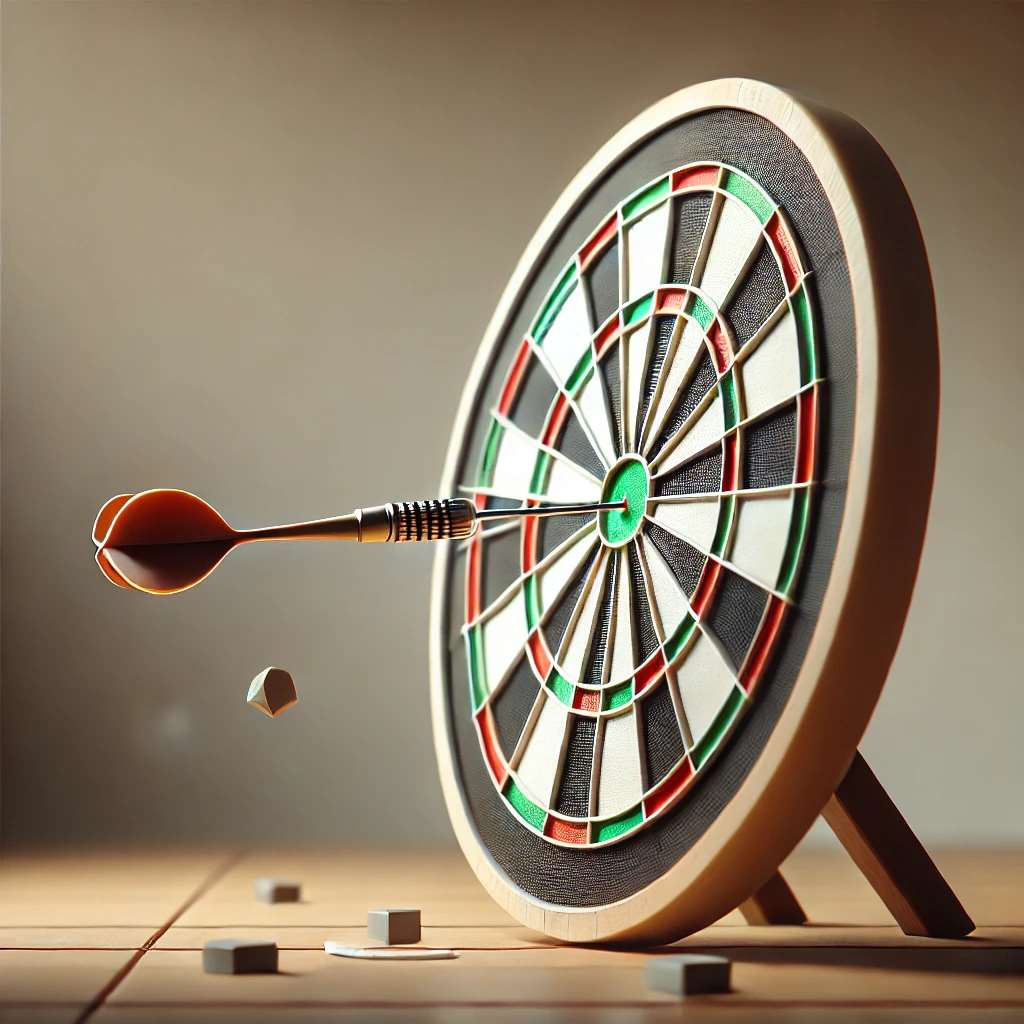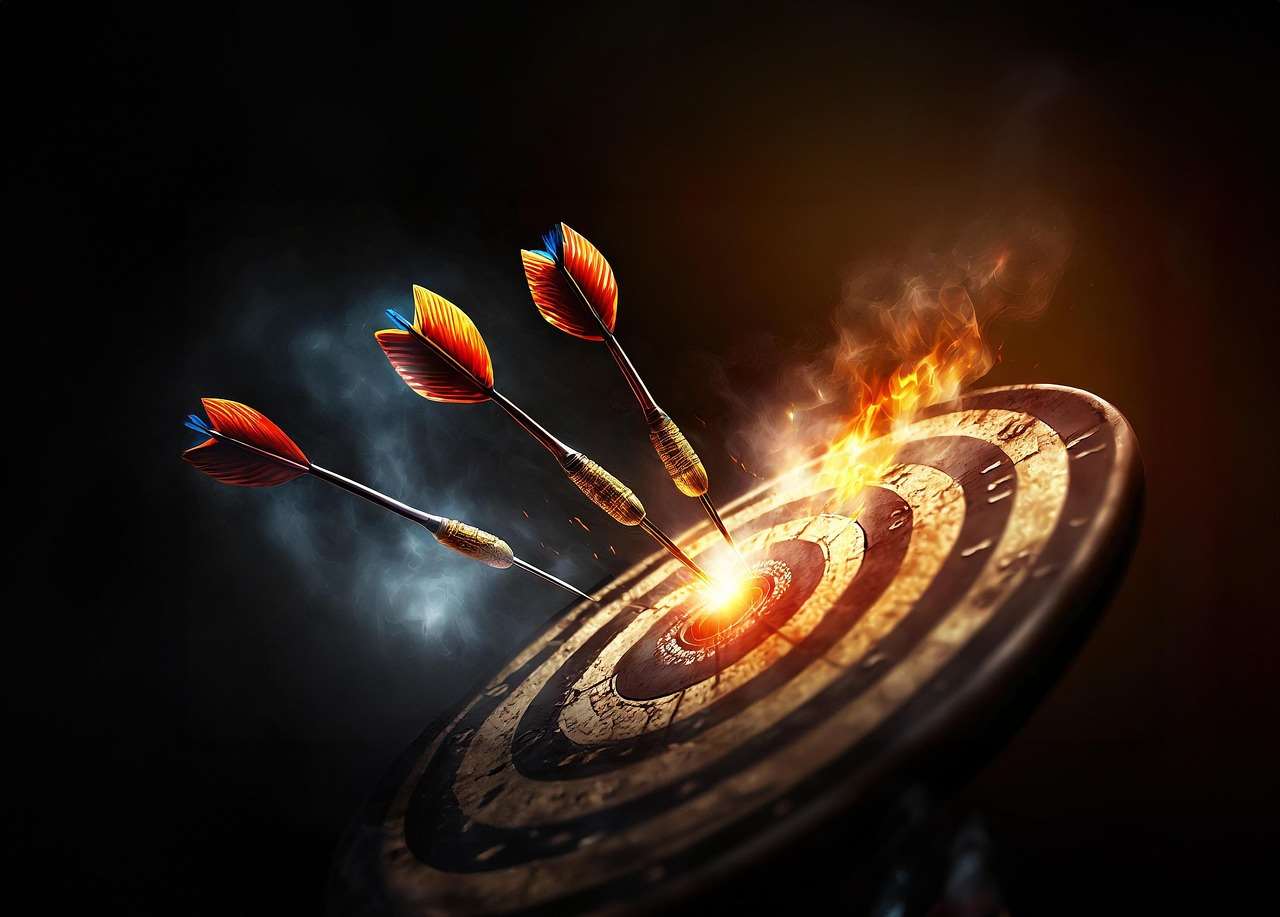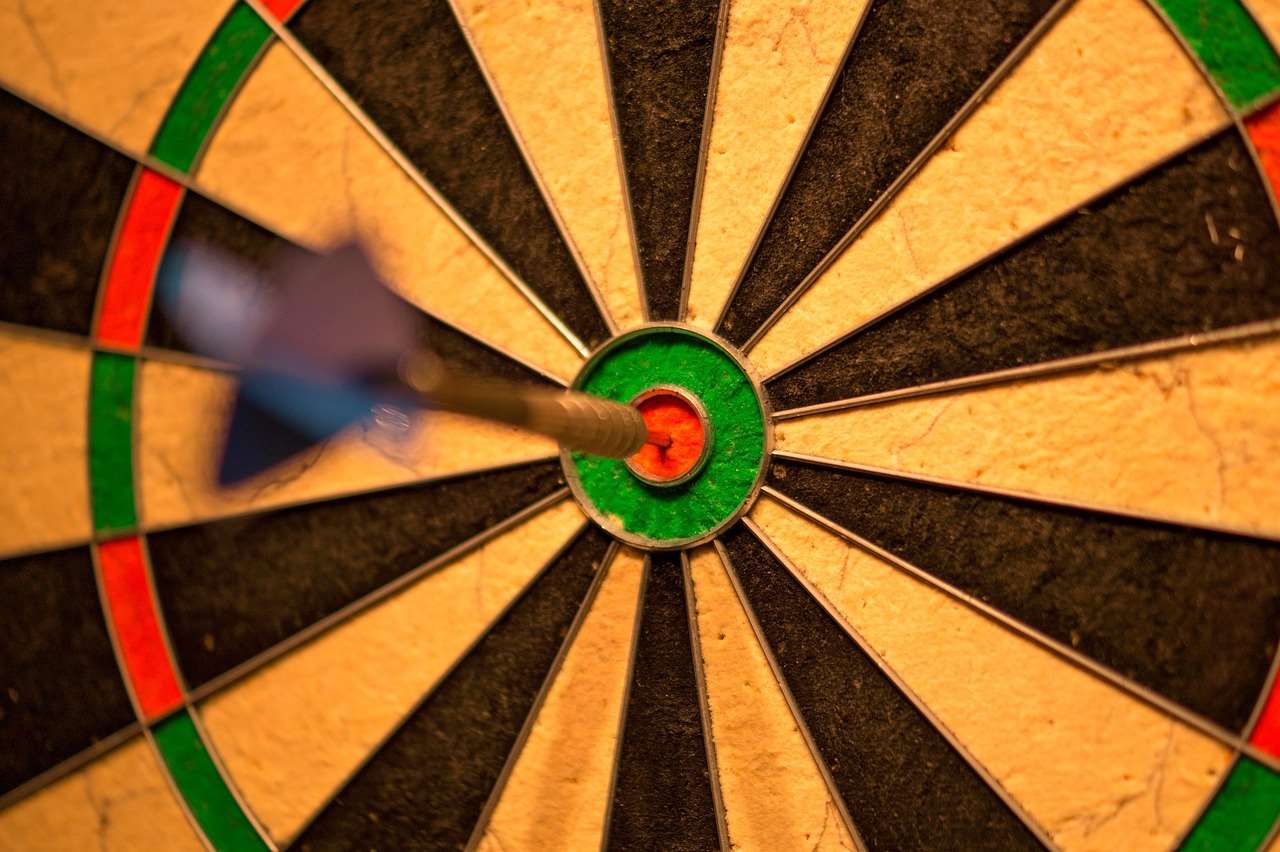Mastering the **darts bull** is crucial for scoring big and dominating the game; hitting that inner bullseye unlocks high scores and strategic advantages. This article will guide you through everything from understanding the bullseye’s value and dimensions to advanced techniques for improving your accuracy and consistency when aiming for the **darts bull**.
⚠️ Still Using Pen & Paper (or a Chalkboard)?! ⚠️
Step into the future! The Dart Counter App handles all the scoring, suggests checkouts, and tracks your stats automatically. It's easier than you think!
Try the Smart Dart Counter App FREE!Ready for an upgrade? Click above!
Understanding the Darts Bullseye
The **darts bull**, located at the very center of the dartboard, is comprised of two concentric circles: the outer bull (also known as the single bull or green bull) and the inner bull (also known as the double bull or red bull). Understanding the value and dimensions of each is fundamental to playing strategically.
Value and Dimensions of the Darts Bull
The outer bull scores 25 points, while the inner bull, often referred to as the **double bull** or bullseye, is worth 50 points. The diameter of the inner bull is typically 12.7mm (0.5 inches), while the outer bull measures 31.8mm (1.25 inches) in diameter. Targeting the **darts bull** can significantly boost your score, allowing for quicker checkouts and greater control of the game. This is especially true in games like 501 where strategic scoring is paramount.
Knowing these dimensions can help you visualize your target and adjust your aim accordingly. Some players even use these measurements as reference points for other sections of the board.

Techniques for Improving Your Darts Bull Accuracy
Consistently hitting the **darts bull** requires practice and a refined technique. Here are several key elements to focus on:
- Stance: A stable and balanced stance is crucial. Most players prefer a slightly angled stance towards the board, with their dominant foot forward. Experiment to find what feels most natural and provides the best stability.
- Grip: A consistent grip is essential for accuracy. Avoid gripping the dart too tightly, as this can lead to tension and erratic throws. A comfortable, relaxed grip will allow for a smoother release. You can use a digital dart score app (https://dartcounterapp.com/) to track your progress and identify areas for improvement.
- Aiming: Focus intently on the **darts bull** before each throw. Visualize the trajectory of the dart and maintain a steady gaze. Some players find it helpful to use the point of their dart to initially pinpoint their target.
- Throwing Motion: A smooth, fluid throwing motion is key. Avoid jerking or twitching movements. The motion should originate from the elbow, with a follow-through towards the target.
- Follow-Through: Completing your throwing motion with a full follow-through is essential for accuracy and consistency. This helps to maintain the intended trajectory of the dart.
Practicing these techniques regularly will significantly improve your ability to consistently hit the **darts bull**.
Drills for Bullseye Practice
To further refine your bullseye accuracy, incorporate these targeted practice drills into your training routine:
- Bullseye Only Drill: Focus solely on throwing at the **darts bull**. Throw a set number of darts (e.g., 20-30) and track your success rate. Analyze your misses and adjust your technique accordingly.
- Around the Clock (Bullseye): Start by aiming for the 20 segment, then move around the board clockwise, hitting each number once before finishing on the **darts bull**. This drill improves your overall accuracy and consistency.
- Double and Bullseye Drill: Alternate between throwing at doubles and the **darts bull**. This drill is particularly useful for practicing checkouts and strategic scoring.
Remember to focus on quality over quantity. Consistent, focused practice is more effective than simply throwing darts haphazardly.

Equipment Considerations for Hitting the Bullseye
While technique is paramount, using the right equipment can also play a role in your bullseye accuracy. Consider the following:
- Dart Weight: Experiment with different dart weights to find what feels most comfortable and controllable. Most players prefer darts in the 22-26 gram range, but personal preference is key.
- Dart Shafts and Flights: The length and shape of your dart shafts and flights can affect the dart’s trajectory and stability in flight. Shorter shafts generally provide more stability, while longer shafts can offer more control. Experiment with different combinations to find what works best for you.
- Dartboard Quality: A high-quality dartboard will have consistent scoring segments and a well-defined **darts bull**. Look for boards made from high-density sisal fibers. Maintaining your dartboard is also important; rotate it regularly to distribute wear and tear.
Choosing the Right Darts
Selecting the right darts involves considering several factors, including weight, material, and grip. Brass darts are a good starting point for beginners, while tungsten darts offer a slimmer profile and higher density, allowing for tighter groupings. The grip should feel comfortable and secure in your hand, without being too slippery or too abrasive. Proper dart set difference can be important to consider before buying. You can also find plenty of advice on online forums and retailers.
Ultimately, the best darts are those that feel right for you and allow you to throw consistently.

Mental Game and Focus When Aiming for the Darts Bull
The mental aspect of darts is just as important as the physical technique. Maintaining focus and managing pressure are crucial for consistently hitting the **darts bull**.
- Visualization: Before each throw, visualize the dart hitting the **darts bull**. This can help to improve your confidence and focus.
- Breathing Techniques: Deep, controlled breathing can help to calm your nerves and improve your concentration. Take a few deep breaths before each throw to center yourself.
- Positive Self-Talk: Encourage yourself with positive affirmations. Avoid negative thoughts and focus on your abilities.
- Dealing with Pressure: Learn to manage the pressure of competitive situations. Remember to focus on your process and avoid getting caught up in the outcome.
A strong mental game can make a significant difference in your ability to perform under pressure and consistently hit your targets, including the **darts bull**.
Overcoming Darts Frustration
Everyone experiences frustrating moments in darts. The key is to learn how to manage these moments effectively. Taking a short break, practicing relaxation techniques, or focusing on a specific aspect of your game can help you to regain your composure and get back on track.
Remember, even professional players experience slumps. The ability to bounce back from setbacks is a sign of mental toughness.

Strategic Importance of the Darts Bull in Different Games
The strategic importance of the **darts bull** varies depending on the game you’re playing. In 501, hitting the **darts bull** can be crucial for setting up checkouts and controlling the flow of the game. In games like Cricket, the **darts bull** is a scoring target that must be closed out before you can score points. Understanding these nuances is essential for playing strategically.
Darts Bull: Key to High Scores and Checkouts
In 501, the **darts bull** is a valuable scoring target, especially when trying to reduce your score quickly. However, it’s important to consider the context of the game. Sometimes, aiming for a treble 20 might be a better option, depending on your remaining score and your opponent’s position. Strategic use of the **darts bull** can significantly impact your chances of winning. You should always aim for the **darts bull** with confidence.
When you’re trying to finish a game, knowing how the bullseye affects your remaining score will help you hit the right targets. Knowing how and when to use the **darts bull** is an essential tool to have in your arsenal.

Common Darts Bull Mistakes and How to Avoid Them
Even experienced players can make mistakes when aiming for the **darts bull**. Here are some common errors and how to avoid them:
- Over-Aiming: Trying too hard to hit the **darts bull** can lead to tension and inaccurate throws. Relax and focus on your technique.
- Inconsistent Stance: A wobbly or inconsistent stance can throw off your aim. Maintain a stable and balanced stance throughout your throwing motion.
- Rushing the Throw: Taking your time and focusing on your target is crucial. Avoid rushing your throw, especially under pressure.
- Ignoring Equipment: Using worn-out or poorly maintained equipment can negatively impact your accuracy. Regularly inspect and replace your darts and dartboard as needed.
By being aware of these common mistakes and taking steps to avoid them, you can significantly improve your bullseye accuracy.
Tips for Maintaining Consistency
Consistency is key to success in darts. Establishing a pre-throw routine, practicing regularly, and maintaining a positive mindset can all contribute to greater consistency. Recording your throws and analyzing your performance can also help you identify areas for improvement. When are the darts world championship semi finals? That might be a good time to watch for pro strategies.
Conclusion
Mastering the **darts bull** requires a combination of solid technique, strategic thinking, and a strong mental game. By understanding the value and dimensions of the bullseye, refining your throwing technique, and practicing regularly, you can significantly improve your accuracy and consistency. Remember to focus on quality over quantity, manage your mental game, and choose the right equipment. Implement the techniques discussed in this article, and you’ll be well on your way to hitting the **darts bull** with confidence. Now it’s your turn: grab your darts and start practicing!
Hi, I’m Dieter, and I created Dartcounter (Dartcounterapp.com). My motivation wasn’t being a darts expert – quite the opposite! When I first started playing, I loved the game but found keeping accurate scores and tracking stats difficult and distracting.
I figured I couldn’t be the only one struggling with this. So, I decided to build a solution: an easy-to-use application that everyone, no matter their experience level, could use to manage scoring effortlessly.
My goal for Dartcounter was simple: let the app handle the numbers – the scoring, the averages, the stats, even checkout suggestions – so players could focus purely on their throw and enjoying the game. It began as a way to solve my own beginner’s problem, and I’m thrilled it has grown into a helpful tool for the wider darts community.